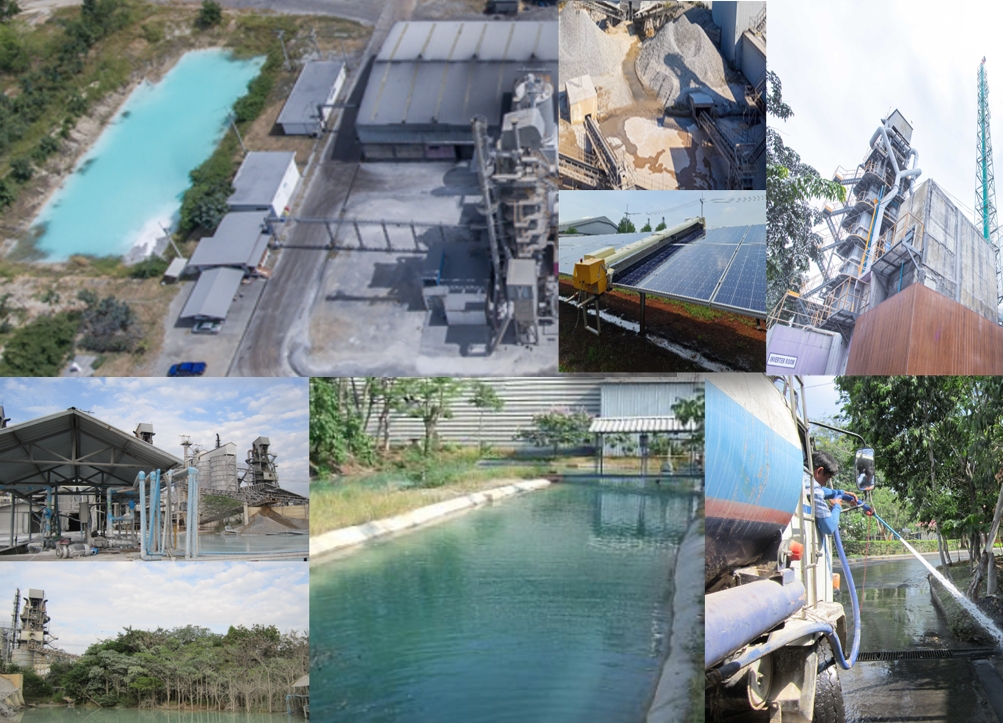
 Water resources management
Water resources management

Golden Lime Public Company Limited recognizes the importance of water resources as a component of ecosystems and living organisms. To create awareness and understanding of the value of water towards personnel and stakeholders so they can participate in water management covering water resource conservation, optimizing water use for optimal benefit, reducing water consumption, and reusing water under the circular economy principle. The Committee, therefore, formulated a policy to lay out a framework for water resource management to secure the availability of water and water resources to suffice the production process and consumption for business operations to build confidence that the Company's operations will leave no impact on the community. It is also consistent with the laws and guidelines to proceed with water resource management under Thailand's national strategy including joining the social communities for sustainable water resource management.
The company has set a framework for water resource management in 4 main frameworks, consisting of
1) Governance (Governance)
Set-out water management policy. It is a part of the Sustainable Development Sustainability Committee to supervise and assign responsible persons to push forward the implementation of integrated water management. by establishing a 10-year long-term strategy by setting a goal to reduce water consumption and to create solid stability in the availability of water resources for production and consumption. Including managing the risk and the likelihood of water shortage due to the impact of climate change.
All inventories must be procured appropriately for purchase and draw-out in accordance with the production plan for accuracy in calculating the cost of raw materials used in production and finish goods that are prepared to deliver to customers.
In each year, there must be the schedule of the inventory checking including the checking of the scrap, obsolete inventory checking.
2) Sustainable water resource management (Water Stewardship)
Set to be managed. The most efficient use of water in the production process. Reusing water for reuse Includes creating cooperation throughout the supply chain to develop and promote or taking part in creating value for the development of water resources to have water resources that can be used continuously, finding ways to reduce water consumption, applying technology or innovation to improve water management and wastewater treatment for reuse This includes driving and managing clean water for good sanitation for all.
3) Participation in water management, including conducting activities for water management
- Creating a network with partners from the government, private sector, and industrial sector. And the agricultural sector To jointly drive to achieve the development of water resource management. Or collectively pushing to contribute to the development of the management to have sustainable water sources and resources as well as participating in the conservation and development of water resources driving wastewater treatment, clean water production or the promotion of clean water for consumption, Natural water retention for use, etc.
- Assessment of risks and impacts on the Company's operations. Covering the risk of water sufficiency for production and consumption
- measures or processes that can collect water from natural sources, such as rainwater harvesting or increasing natural water sources, such as artesian water from underground wells that have been licensed as a sustainable water resource for use in business operations
- Monitoring and surveillance to determine measures to manage water before the drought, have sufficient water for long-term use within the process and consider water sources to store rainwater. Preparation for water reserves to reduce the impact in the event of a drought. Or water from groundwater sources that are out of balance
- Implementation of water management according to circular economy principles. With a commitment to reduce water consumption and increase the use of water circulation to reuse used water within the process. Increase waste water or a system to send water to be stored in the treatment pond for the sedimentation process with lime and reuse the slugged water.
- Implementing preventive measures to prevent water from entering the process, which has a high alkaline value. Ventilate to the outside so as not to affect the social community.
4) Set a framework for the following steps:
- Understand water resources: By studying various factors related to water resources within the organization.
- Access to water resources: studying the feasibility and the extent to which water resource management can be undertaken.
- Water resources development: by analyzing data from the study. Use of technology, innovation, collaboration
And participation in the operation to set up a framework for implementation and development in the form of a sustainable water resource management project.
See more detail from the link for download files.
Water resources management
| Name | : | Water resources management |





